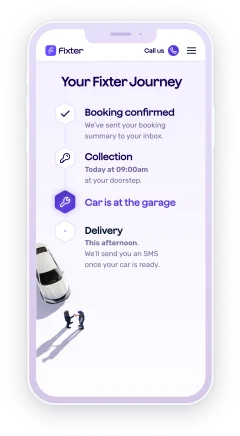Top 5 Issues with the Seat Ibiza and How to Fix Them
The Seat Ibiza, a popular choice among drivers, is known for its stylish design and compact size, ideal for urban settings. Yet, like many vehicles, it comes with its own set of challenges that can baffle owners. From electrical gremlins to engine hiccups, the Ibiza can sometimes test the patience of even the most seasoned motorists. This post will guide you through the top five common problems commonly faced by Ibiza owners, including the check engine light, and provide practical solutions to keep your car running smoothly. Whether you're a seasoned driver or a new owner, understanding these problems can help you maintain your car with confidence.

Engine Oil Leaks
Oil leaks in the Seat Ibiza can lead to various issues, from minor nuisances to significant engine damage. Identifying and fixing these fluid leaks early, as well as addressing issues like worn spark plugs, can save you from costly repairs down the line.
Identifying Leak Sources
Oil leaks can originate from several places in the engine. The most common areas include the oil pan gasket, valve cover gasket, and oil filter. When you notice oil spots under your car, it’s crucial to determine the source.
Inspecting the engine regularly can help catch these leaks early. Look for oil residue around the engine block or below the vehicle. A burning oil smell or smoke may also indicate a leak.
If the leak is minor, it might be a simple fix. Monitor oil levels frequently and top up as needed. However, for persistent leaks, consulting a mechanic is advisable.
Fixing Common Leaks
To fix oil leaks, follow these steps to ensure your engine stays healthy:
Identify the leak: Clean the engine and look for fresh oil after a short drive.
Replace faulty gaskets: If the gasket is worn or cracked, replacing it can stop the leak.
Check the oil filter: Ensure it's tightly secured and not damaged.
Regular maintenance can prevent future leaks. Keep the engine clean and inspect seals during routine checks. If unsure, seek professional assistance to avoid further complications.
Electrical System Failures
Electrical problems are another common problems with seat ibiza concern for Seat Ibiza owners. These issues can affect various components, from headlights to the dashboard, including electric windows .
Common Electrical Issues
Electrical faults can manifest in many ways. Common signs include flickering lights, malfunctioning indicators, and issues with power windows. A drained battery or faulty alternator can also signal an electrical problem.
Diagnosing electrical issues requires patience. Use a multimeter to check battery voltage and test different circuits. If lights dim when starting the car, the battery might be weak.
For more complex issues, like wiring faults or ECU problems, consulting a professional is often necessary. A thorough inspection can reveal underlying issues not immediately apparent.
Repairing Electrical Faults
To resolve electrical faults, consider these steps:
Check the battery: Ensure it's fully charged and terminals are clean.
Inspect fuses: Replace any blown fuses, which might restore functionality.
Look for wiring damage: Repair or replace any frayed or broken wires.
Regular checks and prompt repairs can keep the electrical system in good working order. If problems persist, a qualified technician can provide a comprehensive evaluation.
Suspension Problems
The suspension system in the Seat Ibiza ensures a smooth and stable ride. However, wear and tear can lead to discomfort and handling issues.
Recognising Suspension Issues
Suspension problems often present as a rough ride or unusual noises. If the car bounces excessively or leans during turns, the suspension may need attention.
Visual inspections can reveal signs of wear. Check for leaking shock absorbers or damaged bushings. Listening for clunks or squeaks while driving can also indicate issues.
Handling problems, like pulling to one side, might relate to wheel alignment rather than suspension. It's important to differentiate between these to address the root cause effectively.
Solutions for a Smooth Ride
To maintain a smooth ride, consider these actions:
Inspect shock absorbers: Replace if leaking or worn out.
Check bushings and joints: Worn parts can cause handling issues.
Align wheels: Ensure proper alignment for better stability.
Routine checks and timely repairs, along with regular servicing, can prolong the suspension's life. Addressing minor issues early can prevent significant repairs later.
Brake System Concerns
Brakes are crucial for safety, and any problems with them should be addressed immediately. The Seat Ibiza can experience brake wear, affecting poor performance and potentially leading to reduced power .
Noticing Brake Wear
Brake wear is usually indicated by squealing noises or reduced braking efficiency. Vibrations or a spongy brake pedal are other common signs.
Inspect brake pads regularly for wear. They should be replaced if less than the recommended thickness. Also, check for warped rotors, which can cause vibrations.
Another indication of brake issues is the ABS warning light on the dashboard. This requires immediate attention to prevent potential safety hazards.
Brake Repairs and Maintenance
Maintaining brakes involves several steps:
Replace worn pads: Always use quality replacements for optimal performance.
Inspect brake fluid: Ensure it’s at the correct level and replace if contaminated.
Check rotors: Resurface or replace if warped.
Regular maintenance, including brake fluid checks and pad inspections, can keep the braking system in top condition. Addressing issues promptly ensures safety on the road.
Cooling System Troubles
A well-functioning cooling system is vital to prevent engine overheating in the Seat Ibiza models . Issues can lead to severe engine damage if ignored.
Signs of Cooling Problems
Cooling issues may present as engine overheating or coolant leaks. A rising temperature gauge or steam from under the bonnet are clear indicators.
Inspect the coolant level frequently and check for leaks around the radiator and hoses. If the heater isn’t working, it might indicate a cooling system issue.
A worn water pump or a malfunctioning thermostat can also cause cooling problems. Identifying these early can prevent more significant issues.
Fixing the Cooling System
To repair cooling system issues, follow these steps:
Check coolant levels: Top up if necessary and ensure the right mixture.
Inspect for leaks: Replace any leaking hoses or faulty radiators.
Test the thermostat: Replace if it’s stuck open or closed.
Regular maintenance, including coolant flushes and hose inspections, can prevent cooling system failures. If problems persist, seek professional help to avoid engine damage.








